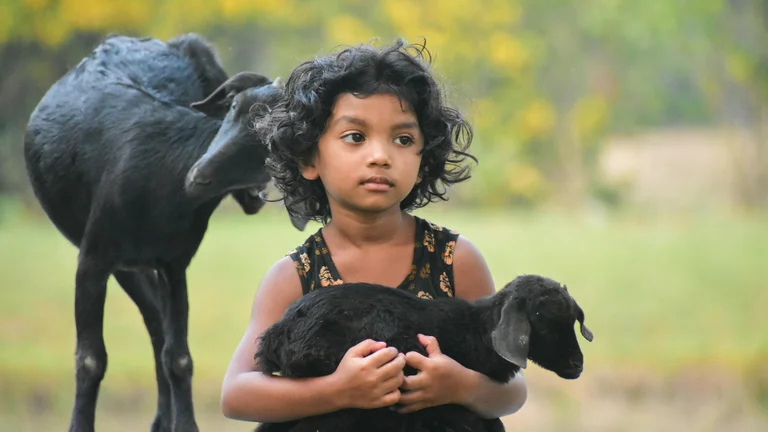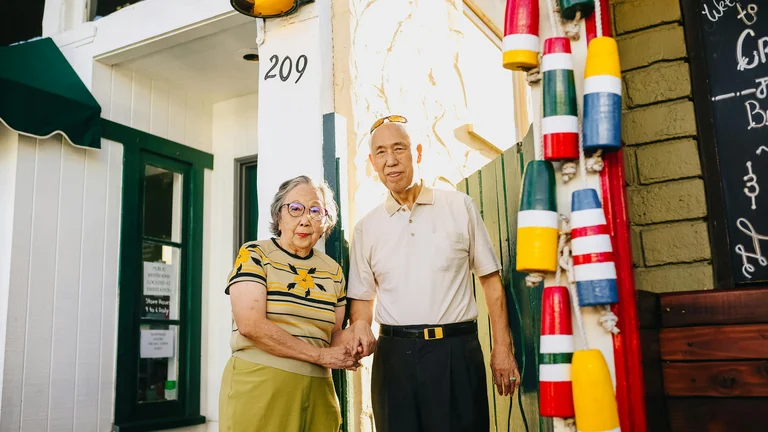
Korean dramas, widely known as K-Dramas, have captivated audiences worldwide with their intricate plots, rich character development, and emotional storytelling. Among the many aspects that make K-Dramas engaging, one of the most heartwarming themes is the portrayal of friend groups. These groups, often depicted with genuine warmth, loyalty, and unconditional support, serve as the backbone for many narratives. They embody friendship's true essence, transcending typical drama tropes to present vivid examples of camaraderie that resonate deeply with viewers. This article meticulously explores some of the most wholesome K-Drama friend groups, dissecting their dynamics, individual traits, and real-world implications of these portrayals.
The wholesomeness of these friend groups is rooted in their ability to display multi-dimensional relationships. Unlike superficial friendships, the K-Drama friend groups often navigate complex emotions like jealousy, sacrifice, grief, and celebration together. The depiction of everyday joys and struggles, imbued with sincere care, makes these groups relatable and aspirational. Examining such groups contributes to understanding cultural nuances, social behavior, and emotional intelligence represented in Korean media. The following sections detail carefully selected friend groups known for their touching loyalty, mutual respect, and unbreakable bonds.
Understanding Wholesome Friendship Representation in K-Dramas
Friend groups in K-Dramas are not merely a side plot or comedic relief; often, they are central to character growth and plot progression. These groups exemplify an idealized form of friendship characterized by honesty, vulnerability, and a balance of individual and collective identity. Unlike Western media, which may emphasize romance or individualism, many K-Drama friend groups highlight the collective emotional ecosystem, where each member’s well-being sustains the group dynamic.
This collective emphasis manifests in several recurring themes: sticking together during hardship, celebrating small successes, giving tough love when necessary, and providing emotional anchors amid personal turmoil. Analyzing such portrayals shows how South Korean cultural values influence storytelling — including collectivism, respect for hierarchy, and the importance of social harmony. Additionally, friend groups reflect the intricacies of youth culture, exploring conflicts and reconciliations with granularity rarely found in other media. This authenticity is a significant reason audiences find these relationships wholesome and relatable.
The Iconic Friend Group from “Reply 1988”
One cannot discuss wholesome K-Drama friend groups without spotlighting the group from “Reply 1988,” a family- and friendship-centric series infamous for its emotional depth and realism. Centered around five childhood friends living in the same neighborhood, this group epitomizes enduring friendship through adolescence and early adulthood. Their interactions extend beyond mere friendship—they function much like an extended family, supporting one another through academic pressures, family issues, and personal dilemmas.
Each member’s individuality contributes uniquely to the group dynamic. For instance, Deok-sun represents empathy and kindness, often bridging conflicts. Sun-woo embodies protectiveness and loyalty, while Dong-ryong is the comic relief with a heart of gold. Taek offers perseverance despite physical challenges, and Jung-hwan is the quiet intellectual anchor. This variety reinforces how different personality types can coexist harmoniously, sustaining the group's unity.
The group’s portrayal includes real-life situations like sibling rivalry, parental pressure, and first loves, making their bond evolve naturally. The series does not shy away from showing disagreements and misunderstandings, yet the reconciliation feels earned and heartfelt. Their wholesome friendship is characterized by shared meals, late-night conversations, and collective problem-solving—small moments that resonate universally.
Notably, the nostalgic setting anchors their friendship in a time before smartphones and social media, emphasizing face-to-face interaction and physical presence. This nostalgic element enhances the authenticity and emotional impact of their bond. Real-world viewers often cite this group as a reminder of their own youth and the friends who shaped them.
Friendship Excellence in “Hospital Playlist”
“Hospital Playlist” features a friend group of five doctors who have maintained their friendship since medical school. This group is a masterclass in balance between professionalism, personal life, and friendship. Their interactions present a refreshing look at adult friendships cultivated in high-pressure environments. What makes this group especially wholesome is their ability to support each other despite the heavy emotional toll of their careers.
The group spends time together jamming in a band, cooking and eating together, and sharing life updates outside of the hospital setting. These activities ground their friendship beyond work, emphasizing the importance of nurturing interpersonal connections amidst demanding schedules. Each member brings distinct traits that blend into a cohesive unit. For example, Ik-jun’s leader qualities complement Jun-wan’s reserved but dependable temperament, while Song-hwa’s nurturing nature balances Yang-seok’s humor and Jeong-won’s wit.
The series carefully weaves moments of vulnerability, such as dealing with patient loss or personal setbacks, reinforcing the healing power of friendship. The sincerity with which the show portrays these layers adds to its wholesomeness. It also promotes a realistic representation of male friendships often overlooked or stereotyped in media.
This friend group acts as a blueprint for maintaining strong social bonds amid adult responsibilities. Their rituals — cooking together, informal music sessions, and mutual check-ins — showcase practical steps to preserve long-lasting friendships. For viewers, it highlights friendship’s role as a critical emotional support system that contributes to well-being and resilience.
“Weightlifting Fairy Kim Bok-Joo” – Youthful Bonds and Growth
In “Weightlifting Fairy Kim Bok-Joo,” the friendships form part of a vibrant coming-of-age story. The friend groups in this drama represent youthful energy, self-discovery, and emotional growth. The sports team setting naturally fosters camaraderie, shared goals, and collective motivation. This environment allows the friendships to evolve authentically, marked by both competitiveness and compassion.
The main friend group, comprising athletes with different backgrounds and personalities, exhibits mutual encouragement that extends beyond the gym. They celebrate victories and provide solace during defeats, underscoring the dual nature of competitive sports and strong friendships. Kim Bok-Joo, the titular character, exemplifies self-acceptance and vulnerability, qualities nurtured within the group. Her friends’ unwavering support reinforces themes of empowerment and personal growth.
What distinguishes this group is how they balance ambition with empathy. The group’s joy, teasing, and affectionate rivalry add levity while maintaining genuine concern. The show takes care to portray the complexities of young friendships – moments of feeling left out, misunderstandings, and reconciliation.
Additionally, the series highlights the importance of having peer groups that accept imperfections. This acceptance fosters self-confidence and nurtures mental health. The blend of humor, warmth, and relatable challenges makes the friend group profoundly wholesome, inviting viewers to reflect on their own youthful friendships.
Comparison Table: Key Traits of Wholesome K-Drama Friend Groups
| K-Drama | Group Size | Setting | Primary Traits | Notable Features |
|---|---|---|---|---|
| Reply 1988 | 5 | Neighborhood/Friendship | Loyalty, Empathy, Nostalgia | Realistic family and youth dynamics |
| Hospital Playlist | 5 | Hospital/Professional | Support, Maturity, Balance | Adult friendships amid professional life |
| Weightlifting Fairy Kim Bok-Joo | 5-6 | University/Sports | Encouragement, Growth, Humor | Peer support in sports and coming-of-age |
| Because This Is My First Life | 2-4 | Housemates/Urban Life | Understanding, Quirkiness, Dependability | Non-romantic roommate bonds |
| Strong Woman Do Bong Soon | 3-4 | Urban/Workplace | Care, Protection, Fun | Mix of humor and fierce loyalty |
Factors That Make K-Drama Friend Groups Wholesome
Wholesomeness in K-Drama friend groups emerges from several intertwined factors. Firstly, the depiction of unvarnished support irrespective of flaws differentiates these groups. Characters accept each other without pretense, an essential marker of sincerity in friendship. This acceptance ranges from forgiving mistakes to celebrating each other’s differences.
Secondly, effective communication and emotional intelligence are consistently emphasized. The dramas avoid oversimplified relationships where friends agree on everything. Instead, tensions arise and are resolved thoughtfully, teaching viewers that conflict is normal but overcoming it strengthens bonds. This adherence to realistic emotional complexity adds depth to their wholesomeness.
A third factor is shared experiences. K-Drama friend groups bond through common challenges — academic stress, work strain, family issues, or life transitions. Shared hardships create intimacy and trust, demonstrated through sacrifices or acts of kindness during critical moments. These shared narratives allow viewers to see friendship as a dynamic, evolving connection with real emotional stakes.
Finally, expressions of physical affection and mutual care often punctuate the stories without crossing platonic boundaries. Simple acts like cooking together, spontaneous hugs, or gifting personal belongings reinforce the warmth that defines these relationships. Such gestures emphasize that friendship encompasses various types of intimacy beyond romance.
Practical Lessons from Wholesome K-Drama Friend Groups
Examining these friend groups unveils practical lessons for real-life friendships. One significant takeaway is the importance of patience. K-Dramas illustrate that meaningful friendships withstand misunderstandings and require effort. Respecting individual differences and allowing space for growth nurtures longevity. This can be enacted through listening actively and forgiving mistakes without holding grudges.
Another lesson is the role of shared rituals. Whether it’s weekly dinners, study sessions, or recreational activities, routines provide stability and foster continuous bonding. Setting and maintaining such traditions helps build a sense of belonging and collective identity. It also creates memories that reinforce emotional connections over time.
Moreover, the depiction of emotional openness encourages vulnerability. Trusting friends with insecurities or fears, as frequently portrayed in K-Dramas, fosters deeper understanding and empathy. These dramas normalize expressing complicated feelings constructively, which translates into healthier real-world communication.
The friend groups also demonstrate mutual support during transitions, such as career changes or relationship shifts. Offering non-judgmental advice or physical presence during such episodes proves vital. This teaches viewers that friendship extends beyond good times to active participation in difficult life moments.
List of Characteristics Defining Wholesome K-Drama Friend Groups:
- Unconditional acceptance of each other’s flaws and differences
- Open and honest communication, including conflict resolution
- Emotional support during hardships and celebrations
- Shared experiences and rituals enhancing group identity
- Balance between individuality and group cohesion
- Physical affection expressed platonically
- Growth encouragement and personal development support
Case Study: Impact of K-Drama Friend Groups on Global Audiences
K-Dramas have transcended South Korean borders, drawing a massive global following. The wholesome depiction of friend groups has contributed significantly to this popularity. Across social media and fan forums, viewers frequently discuss how these friendships prompt reflection about their own relationships. The emotional authenticity offers comfort, particularly in an increasingly digital and fragmented social world.
Research in media psychology suggests that positive portrayals of friendship can reinforce prosocial behavior among viewers. Fans of K-Dramas often cite inspiration from these groups to cultivate similar values—mutual respect, reliability, and empathy—in their friendships. Additionally, these dramas help break stereotypes about Asian social dynamics by revealing nuanced interpersonal relations.
The international appeal also lies in the universality of friendship struggles and joys portrayed. Regardless of cultural background, viewers relate to themes like feeling accepted, navigating conflicts, and standing by friends through various life phases. This emotional resonance exemplifies K-Dramas' effectiveness in storytelling.
For some, the friend groups provide models for creating supportive communities. This is especially evident in online fan groups where members form close-knit bonds, mirroring drama-inspired ideals. In this sense, the impact of wholesome K-Drama friend groups extends beyond entertainment into real social experience and learning.
Exploring Gender Dynamics in K-Drama Friend Groups
Gender representation within friend groups in K-Dramas offers insightful commentary on societal expectations and norms. Female friend groups often emphasize emotional intimacy, joint problem-solving, and nurturing roles. Shows like “Age of Youth” portray young women navigating autonomy and societal pressure together, underscoring solidarity.
Male friend groups, traditionally depicted with stoicism or competitive undertones in many cultures, experience a refreshing portrayal of emotional complexity in K-Dramas such as “Hospital Playlist.” Here, male characters openly share grief, joy, and vulnerability without compromising masculinity. The balance between humor and earnestness enriches the depiction.
Mixed-gender friend groups add further dimension, showcasing dynamics where platonic relationships circumvent romantic tension. This break from common romantic tropes deepens the narrative, focusing instead on friendship as a separate valuable connection. Examples like the “Because This Is My First Life” group balance quirky personalities and emphasize mutual respect.
Understanding these gender nuances helps viewers appreciate the multifaceted nature of friendships portrayed. The dramas challenge restrictive stereotypes by presenting diverse modes of male, female, and mixed-gender interactions rooted in respect and authenticity.
Steps to Build a Friend Group Inspired by Wholesome K-Drama Dynamics
Emulating the wholesomeness seen in K-Drama friend groups requires intentional actions. Start by cultivating open communication. Create spaces where it’s safe to express feelings, concerns, and joys without judgment. This can be practiced by arranging regular meetings devoted to sharing personal updates or challenges.
Encourage vulnerability by leading with your own experiences. Sharing personal struggles or fears invites others to do the same, building trust. Be willing to listen actively, prioritizing understanding over immediate solutions.
Create group rituals that promote bonding. These might include shared meals, watching dramas together, or engaging in hobbies that interest the group. Consistency in these rituals strengthens cohesion and creates lasting memories.
Respect individuality by appreciating different personalities and preferences. Avoid pressuring members to conform, instead celebrating diverse approaches and viewpoints. This respect encourages authentic self-expression.
Be present during important life moments for members. Show support during celebrations and crises alike to reinforce reliability. Small gestures like messages, surprise visits, or offering help concretize friendship promises.
Finally, initiate conflict resolution with patience and empathy. Recognize that disagreements are natural and use them as opportunities to deepen understanding rather than reasons to separate.
Summary Table: Building Blocks of a Wholesome Friend Group
| Building Block | Description | Practical Example |
|---|---|---|
| Open Communication | Safe environment to share thoughts and emotions | Weekly group check-ins focusing on feelings |
| Vulnerability | Sharing insecurities and challenges | Personal storytelling sessions during meetups |
| Group Rituals | Regular activities that foster bonding | Monthly dinner parties or game nights |
| Respect for Individuality | Accepting diverse personalities and choices | Allowing freedom in event participation |
| Supportive Presence | Being there during highs and lows | Sending thoughtful messages or gifts |
| Conflict Resolution | Addressing disagreements with empathy | Calm discussions post-conflict to clarify issues |
In conclusion (though formal conclusions are omitted here), the wholesome friend groups presented in K-Dramas are more than fictional constructs. They provide blueprints for meaningful connections grounded in authenticity, resilience, and care. Their narratives teach valuable lessons about human connection relevant across cultures. Whether nostalgic neighborhood friends, professional colleagues who become family, or peers growing together, these groups remind viewers of friendship’s enduring power and transformative capacity.
FAQ - Most Wholesome K-Drama Friend Groups
What defines a wholesome friend group in K-Dramas?
A wholesome friend group in K-Dramas is characterized by unconditional acceptance, honest communication, mutual support during hardships and celebrations, shared experiences and rituals, respect for individuality, and genuine expressions of platonic affection.
Which K-Dramas feature the most wholesome friend groups?
Some of the most renowned K-Dramas highlighting wholesome friend groups include Reply 1988, Hospital Playlist, Weightlifting Fairy Kim Bok-Joo, Because This Is My First Life, and Strong Woman Do Bong Soon.
How do K-Drama friend groups influence viewers’ perceptions of friendship?
K-Drama friend groups offer realistic and emotionally complex portrayals of friendship, encouraging viewers to value patience, vulnerability, mutual respect, and consistent support in their own relationships.
Are there gender differences in how friendship groups are portrayed in K-Dramas?
Yes. Female friend groups often emphasize emotional intimacy and nurturing, male friend groups display vulnerability alongside humor and support, and mixed-gender groups explore platonic dynamics without romantic tension.
Can viewers learn practical friendship skills from K-Dramas?
Absolutely. K-Dramas illustrate the importance of open communication, creating group rituals, supporting friends through life transitions, respecting individuality, and resolving conflicts empathetically.
Most wholesome K-Drama friend groups showcase genuine loyalty, emotional support, and nuanced interactions, reflecting authentic social bonds. Series like Reply 1988 and Hospital Playlist highlight friendships grounded in empathy, shared experiences, and resilience, providing viewers with realistic and inspiring models for nurturing meaningful friendships.
Wholesome K-Drama friend groups represent more than fictional camaraderie; they embody meaningful social values such as empathy, loyalty, and resilience. These groups offer relatable, nuanced depictions of friendship that resonate globally, encouraging viewers to cultivate trust, vulnerability, and mutual support in their own relationships. Their layered portrayals demonstrate the power of connection amid life’s complexities, reminding audiences of friendship’s profound role in emotional well-being.






